Fashion
From clanlands to catwalk: how Scotland’s iconic tartan invaded fashion

Since her landmark Anglomania collection for autumn/winter 1993, in which Vivienne Westwood melded the 18th century French craze for English tailoring with clashing clan tartans, this distinctive Scottish fabric has made frequent appearances in her collections. Tartans and tweeds, the designer once said, “tell a heroic tale of crags and glens, mists and lochs, sea and sun on the heather”.
This season, Westwood’s brand continues the late designer’s legacy with vibrant kilt-like skirts and swagged-out jackets; at Schiaparelli, the checks are woven in a muted palette; at Rabanne, they are layered in eclectic colour combinations; and they turn up in knits and rug-like fringed skirts at Helmut Lang. Yohji Yamamoto, meanwhile, created asymmetric volumes in a mash-up of woven red and black tartans with tweeds for his autumn collection.
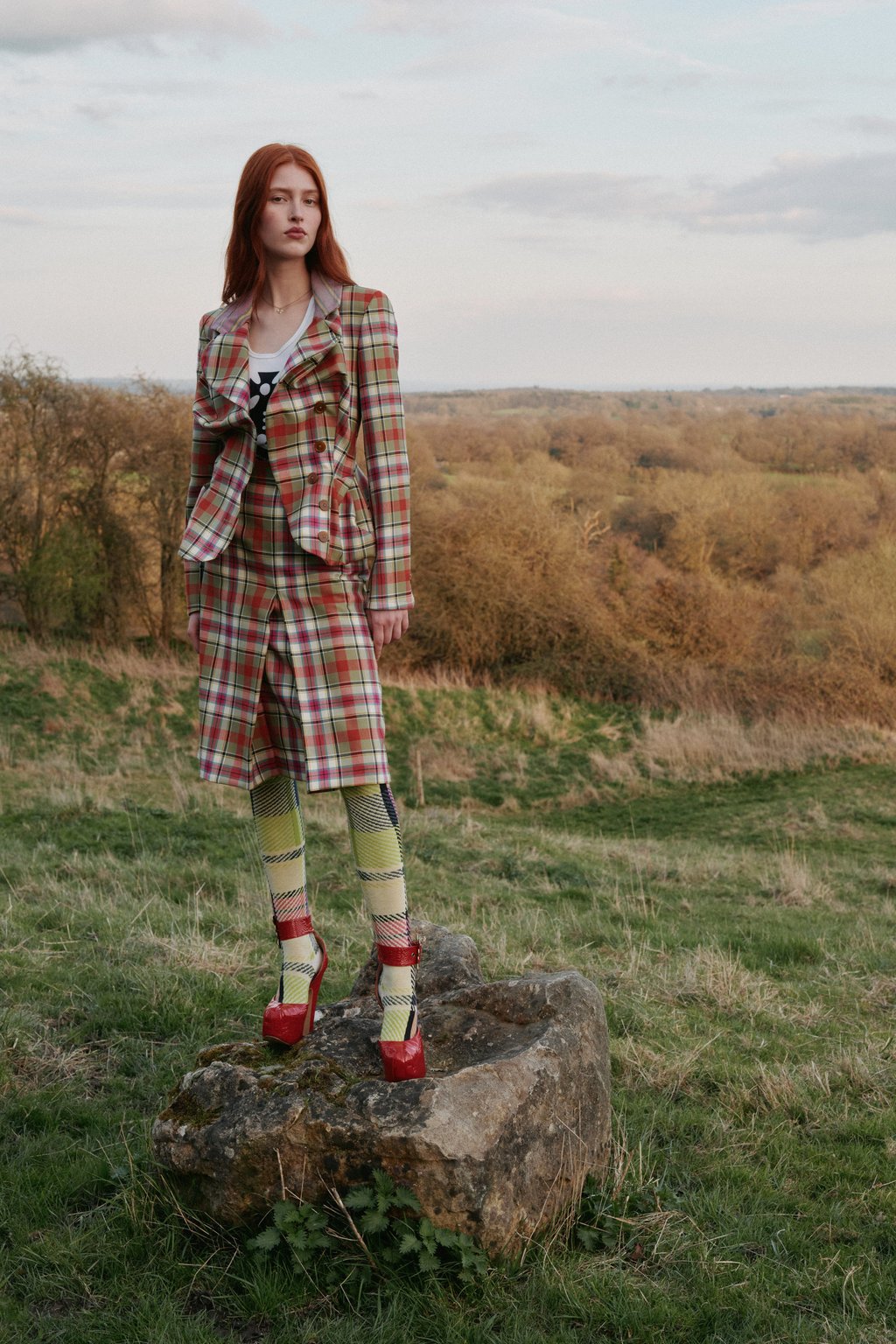
Tartan has a distinctive grid structure that is defined by principles of colour and proportion. It is also a pattern constantly being disrupted and deconstructed.
Whether simple repeated checks or complex asymmetries, the designs were originally produced by individual weavers in their crofts – much like traditional Harris tweed – but are now produced at specialist mills. Each tartan was associated with a specific Scottish clan – until the Jacobite risings against the English between 1689 and 1746, and the subsequent Highland Clearances, which saw farmers evicted from their land. Following the bloody 1746 Battle of Culloden, the British government passed laws to dismantle the clan system, with the wearing of tartan and kilts forbidden. The clearances and broader repression by the English were memorably referenced by Alexander McQueen in his autumn/winter 1995 Highland Rape collection, and later in autumn/winter 2006, with The Widows of Culloden.
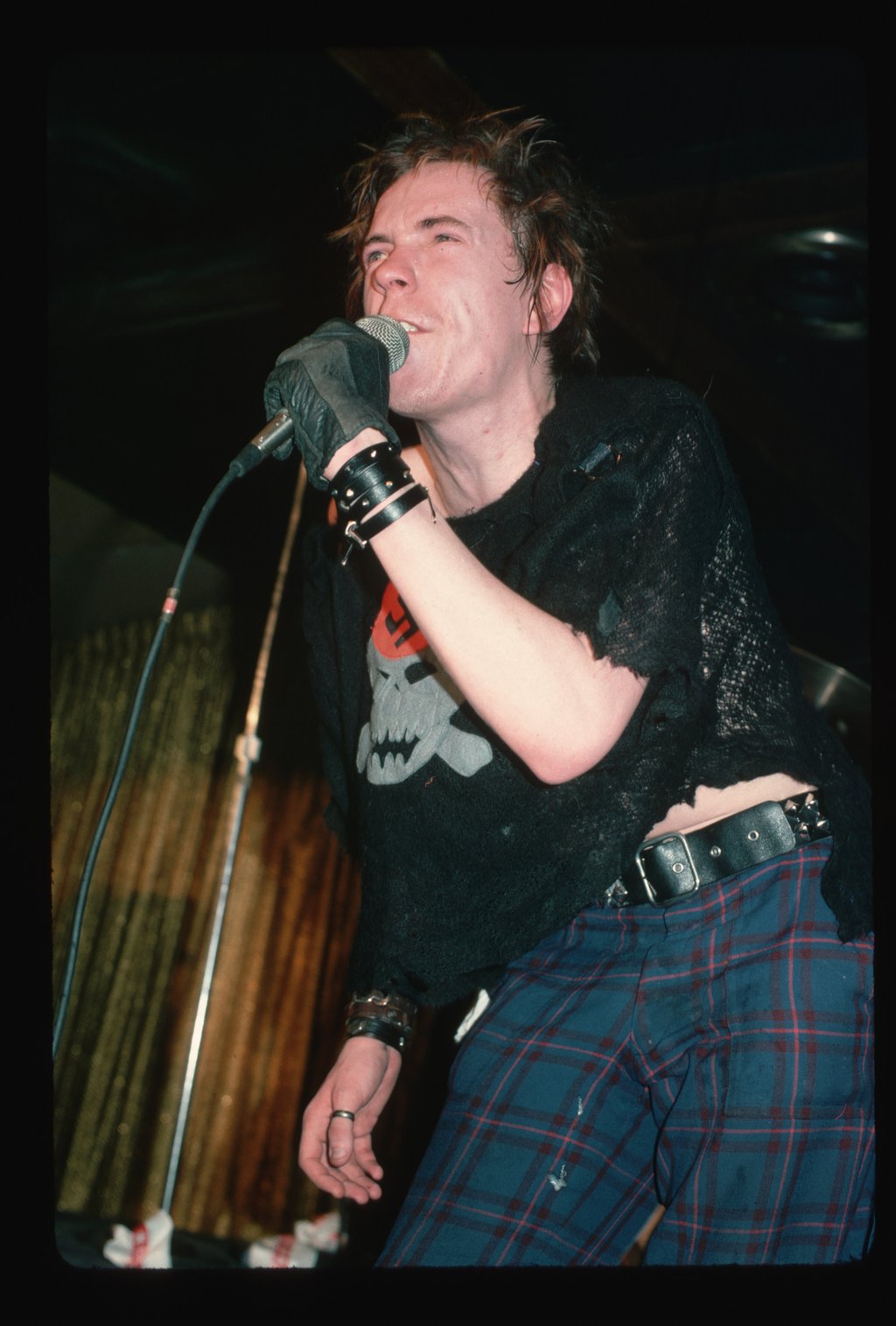
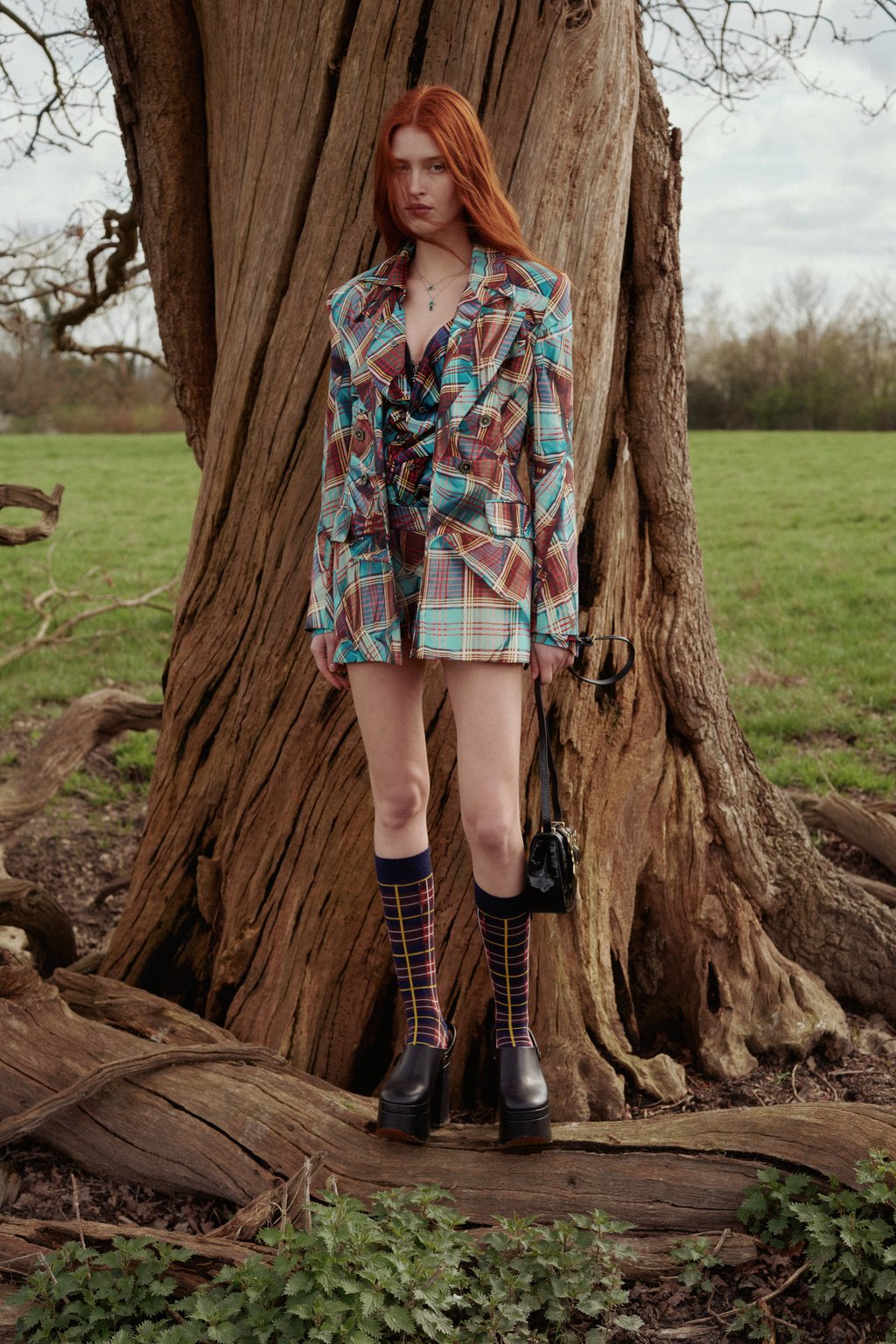
So enamoured of the cloth was Westwood that she worked with weaver Lochcarron of Scotland to design her own tartan, the MacAndreas, named after her husband and design partner, Andreas Kronthaler; the pattern has been added to the Scottish Register of Tartans. Over the decades, Westwood and Lochcarron co-designed more tartans, which filtered into the designer’s collections via tailoring that sat asymmetrically and askew on the body. The designer loved the cloth’s versatility, noting that “tartan looks great with tartan; Harris tweed looks great with Harris tweed. They both look great with every other fabric, from velvet and fur to lace and metal.”
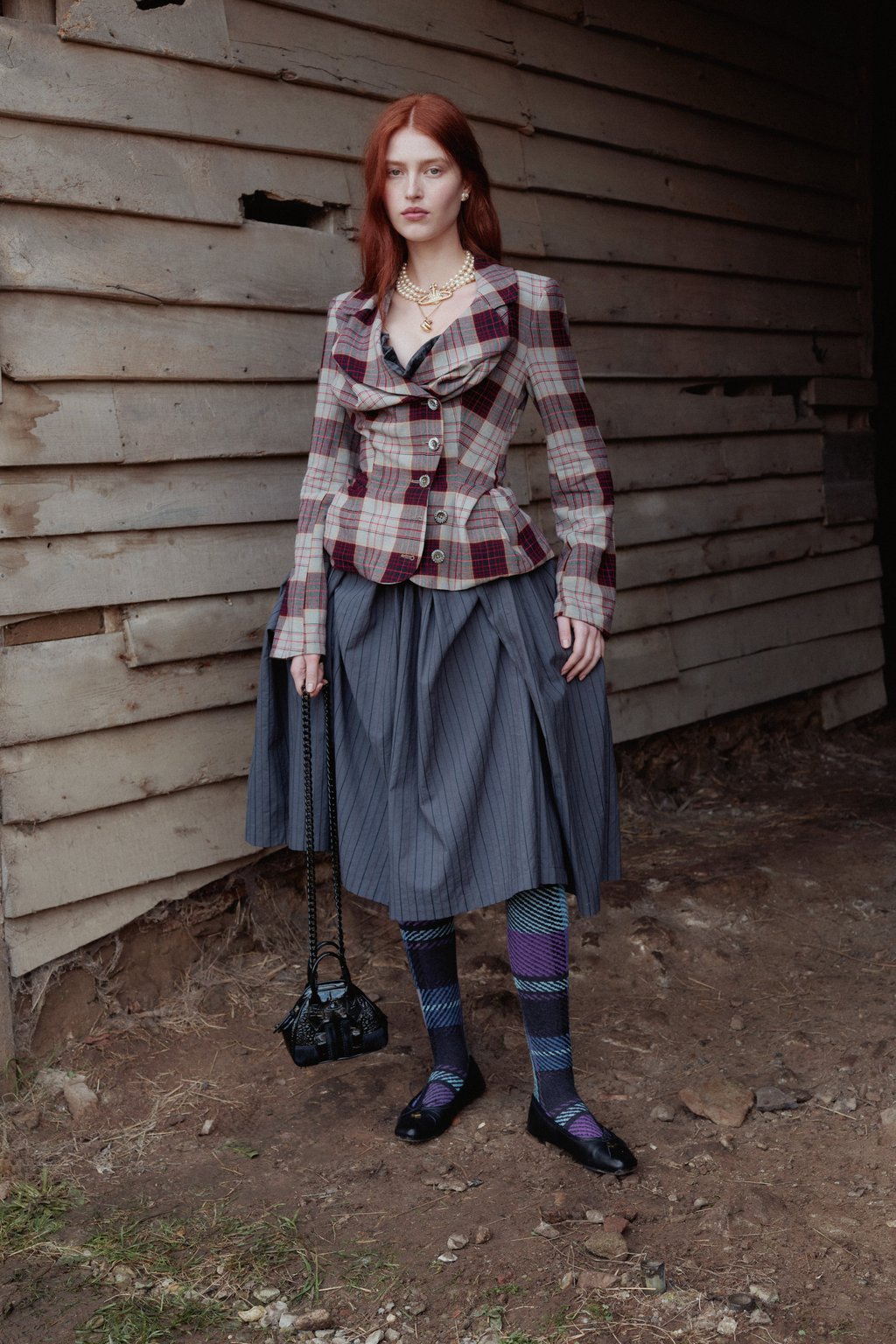
“The relationship between Vivienne Westwood and Lochcarron started in the 1980s”, says Leah Robertson, head designer at Lochcarron, “and was cemented further with the campaigns Fashion 88 and Fashion 90 [created by Hamish Carruthers, a textile designer from the Scottish Borders], which were incredibly successful in bringing international designers to the Scottish Borders and Scotland to highlight the skills and talents of the mills.”
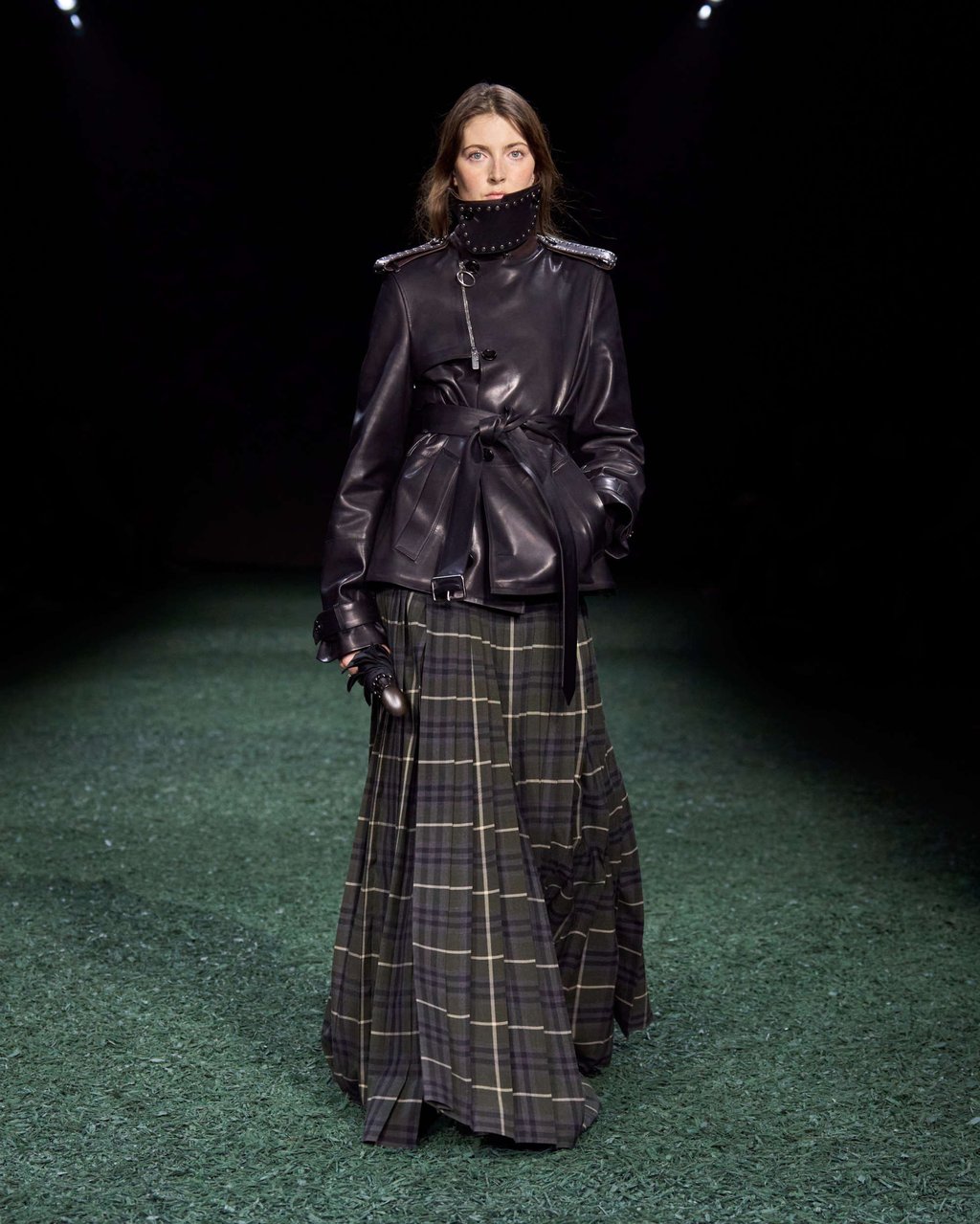
One of the biggest labels Lochcarron works with is Burberry, whose creative director Daniel Lee’s autumn collection was inspired by the brand’s outdoors heritage. Scottish menswear designer Charles Jeffrey Loverboy, meanwhile, is an example of a younger brand working with Lochcarron to create fresh, vibrant tartans. And with any client, the Scottish mill’s motto is “kilt to catwalk”.
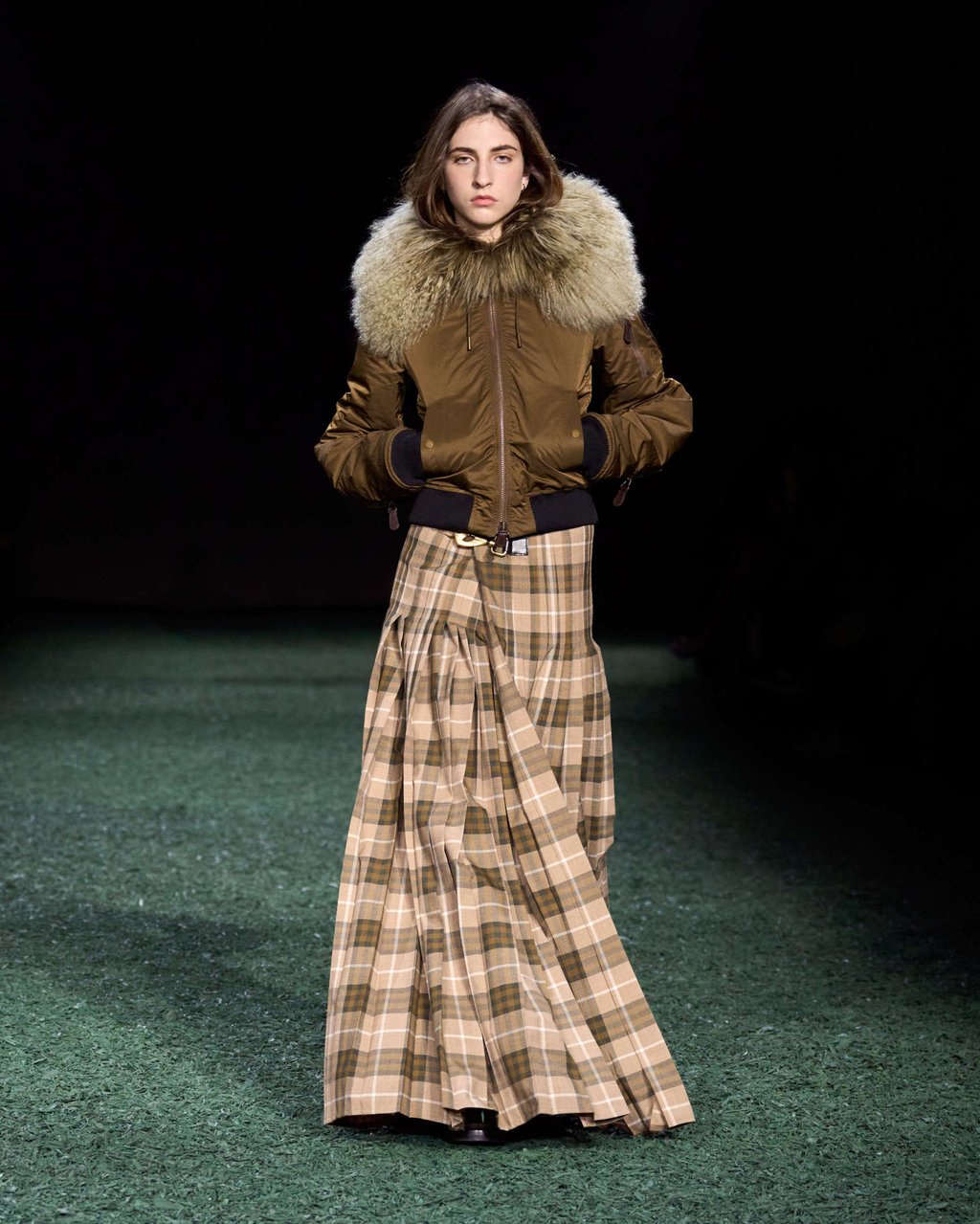
“There’s a sense of craft in this collection,” says Lee, who began his research in the Burberry archive, and the mills of Lochcarron and Donegal. He drew from them certain earthy green and beige Burberry checks, which he turned into floor-sweeping kilts worn with leather jackets and silky blousons, and added a pop of red tartan for scarves. “I wanted to take a traditional approach to the fabrics and how each piece is made”, says Lee. “Craftsmanship has always been at the heart of design.”
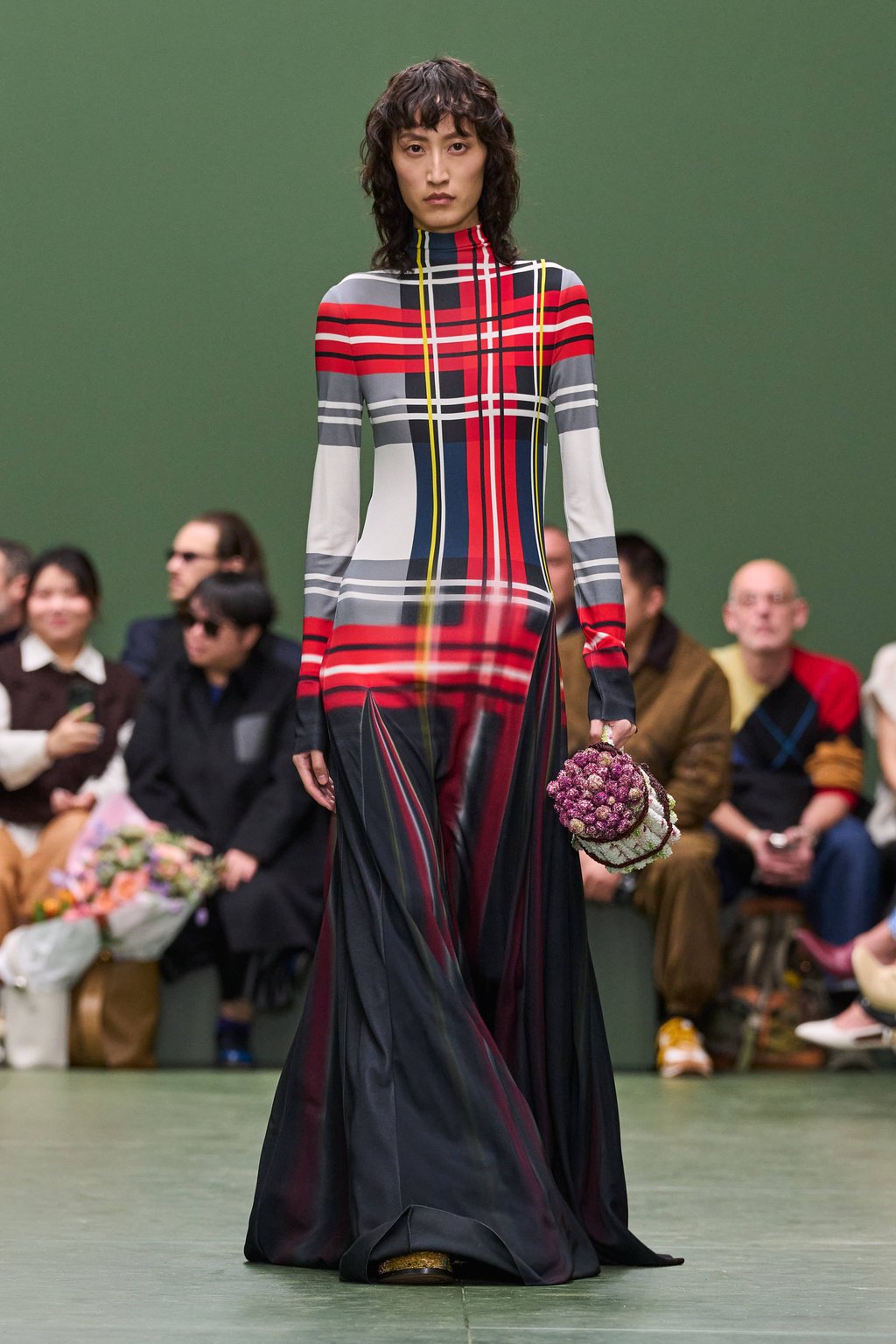
Classic patterns are in store for winter, with Jonathan Anderson of Loewe showing an exploded tartan that bled into a black skirt printed on Jersey rather than woven in Scotland. Chloé’s Chemena Kamali produced a couple of tartan coats, albeit in wool sourced from Italy, as it was one of her references to Karl Lagerfeld, who helped shape the maison for many years. He, too, used tartan, but that was more of an homage to the brand’s DNA than an example of being inspired by the Scottish weave.
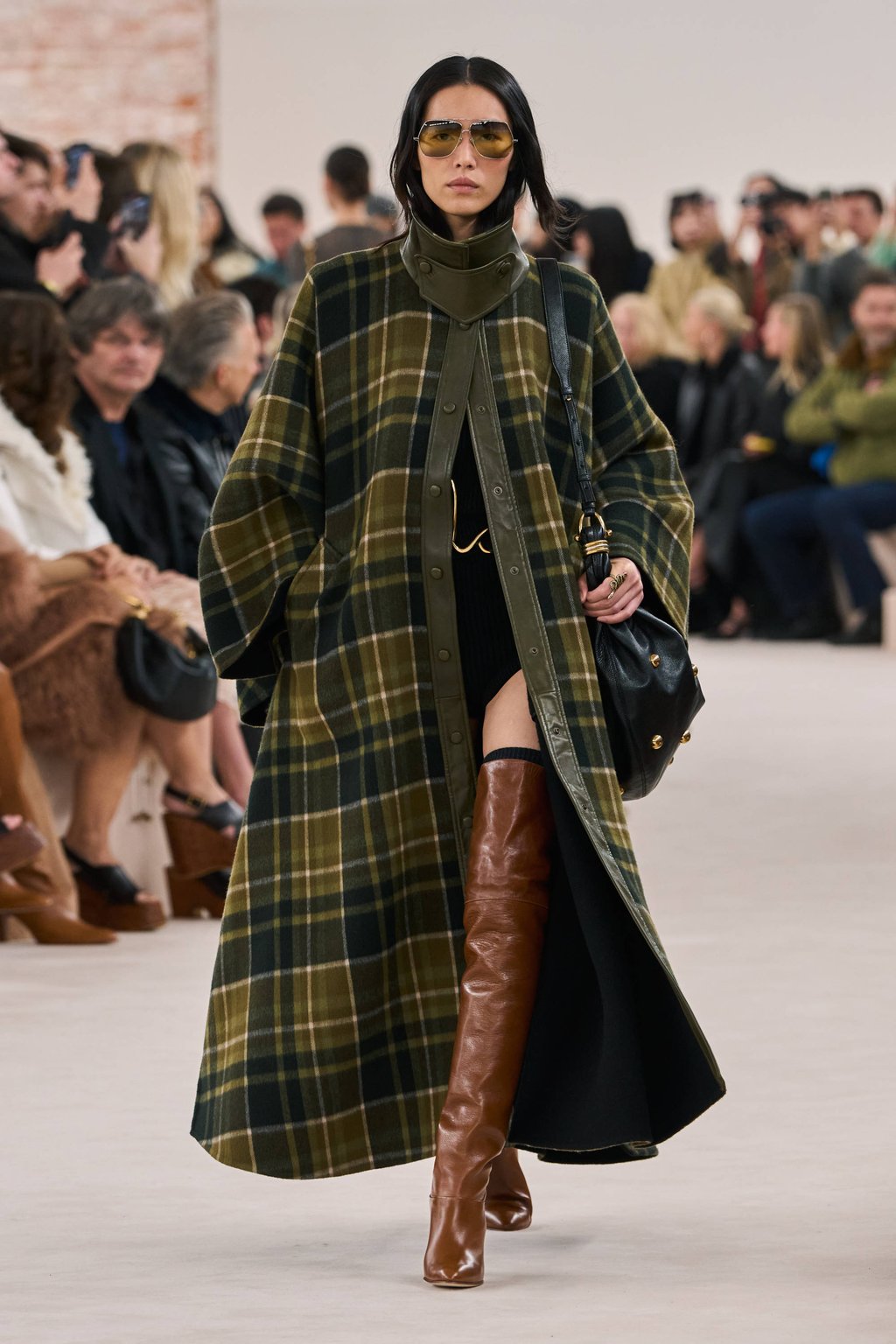
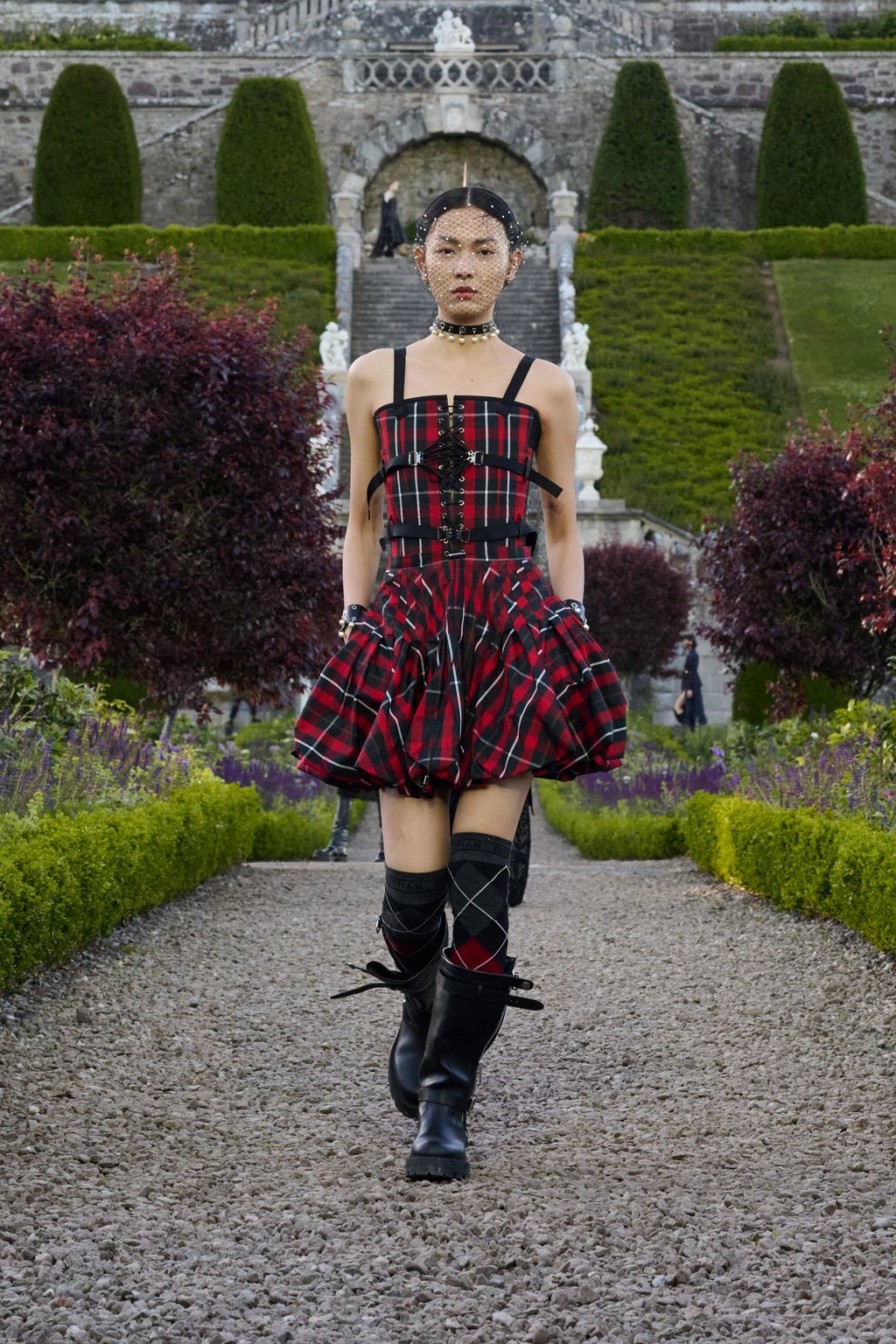
As far back as the 1950s, Chanel and Dior were filtering tartan into their couture collections. And this June, in the parterre gardens of Drummond Castle in Perthshire, Scotland, Maria Grazia Chiuri presented her Highland-themed cruise 2025 collection for Dior. The designer had spent the previous winter visiting the Shawbost mill on the island of Lewis and Harris in the Outer Hebrides, where she sourced signature Harris tweed tartans as well as Johnstons of Elgin cashmere, and worked with young businesses such as Le Kilt to make the traditional garment.
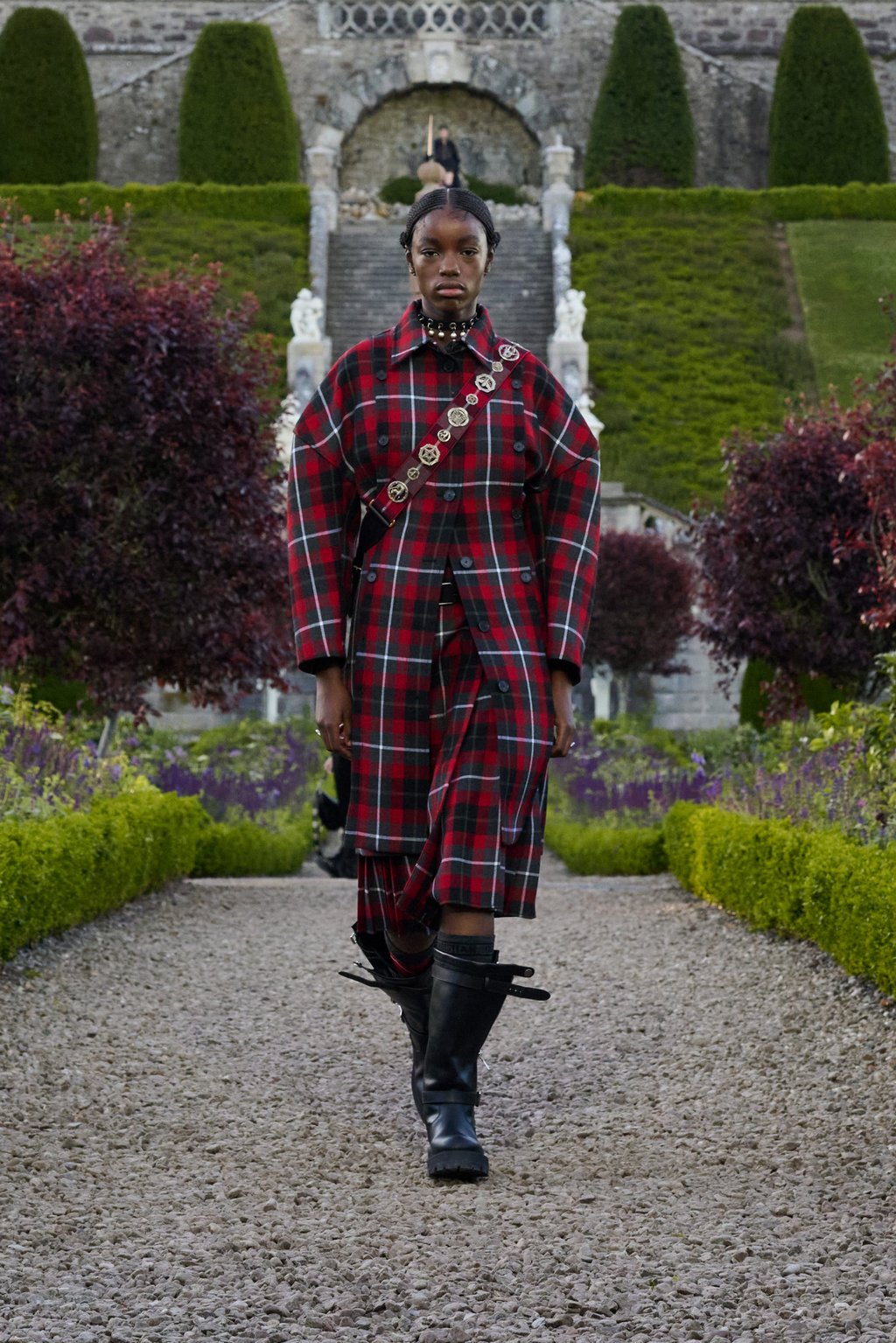
The collection was, in part, inspired by Mary, Queen of Scots, while drawing on the memories of a collection Christian Dior presented in 1955 at the Gleneagles Hotel, also in Perthshire. Chiuri presented an emblematic tartan laced with an undercurrent of the fabric’s punk iteration, combining bustle dresses with bondage strapping, argyle socks and sturdy boots.
As a finishing touch, she added the military insignia of Highland dress, drawing on the country’s history of subversion to make a statement, something that hasn’t changed all that much to this day.










